Table of Contents
Table of Contents
- What Is Share of Voice and How Does It Help Your Agency?
- How To Measure and Report Share of Voice to Clients
- Using Voice Tools for Accurate SOV Calculations
- Common Mistakes When Measuring Share of Voice
- How To Improve Share of Voice
- Expanding Reach With Collaborations and Partnerships
- Using Customer Feedback for Product or Service Improvements
- How To Use Share of Voice to Pitch New Clients
- The Takeaway
7,000+ agencies have ditched manual reports. You can too.
Free 14-Day TrialQUICK SUMMARY:
Share of voice measures a brand's presence in its industry compared to competitors. It's a key metric for understanding brand visibility and effectiveness of marketing efforts. This article explains how to calculate and improve share of voice to enhance brand awareness, optimize content placement, and gain competitive insights.
Imagine that you’re traveling and want to visit a cafe for a coffee. There are many cafes in the neighborhood to choose from, so you turn to Google to find a shop.
How do you make your choice? Easy. The results show a particular shop with thousands of positive online reviews and even news articles they’ve been featured in. You click for directions and head out the door.
This example highlights why Share of Voice (SOV) is important for marketing agency clients. You'll send more customers by increasing your client’s presence in the online discussion about their industry (and, in some cases, location).
Help your clients gain control of how their brand is perceived through online mentions and dominate their industry by utilizing Share of Voice data in their marketing strategies.
What Is Share of Voice and How Does It Help Your Agency?
Share of Voice (SOV) is an important metric to look at when you’re measuring a client’s brand or company presence. Marketing agencies use SOV to analyze their client’s visibility compared to competitors in their specific industry and determine their brand’s share and percentage of awareness on a particular channel.
The main goal of tracking Share of Voice for your clients is to gain insights into the competitiveness and also the effectiveness of your marketing efforts.
Share of Voice is not to be confused with market share, though they do relate to each other. It can be a bit confusing, but it’s broken down like this:
Share of Voice | Market Share |
|---|---|
The measurement of brand visibility and awareness within a specific marketing channel. | The percentage of a market that a client’s business controls either by revenue or the number of customers they have. |
One of the main benefits of monitoring and analyzing your client’s Share of Voice data is the potential to increase market share. It also gives you insights into how your clients’ brand messaging is being received by their market.
For example, by monitoring the conversations around a client’s product and the sentiment, your agency has the opportunity to relay valuable information about a product or service. Positive sentiment, particularly around features or use cases that were not originally part of the marketing plan could influence future messaging, whereas negative mentions could indicate an issue that needs to be addressed.
So, how is Share of Voice calculated? It varies from client to client depending on the specific metric being measured and the platform being analyzed.
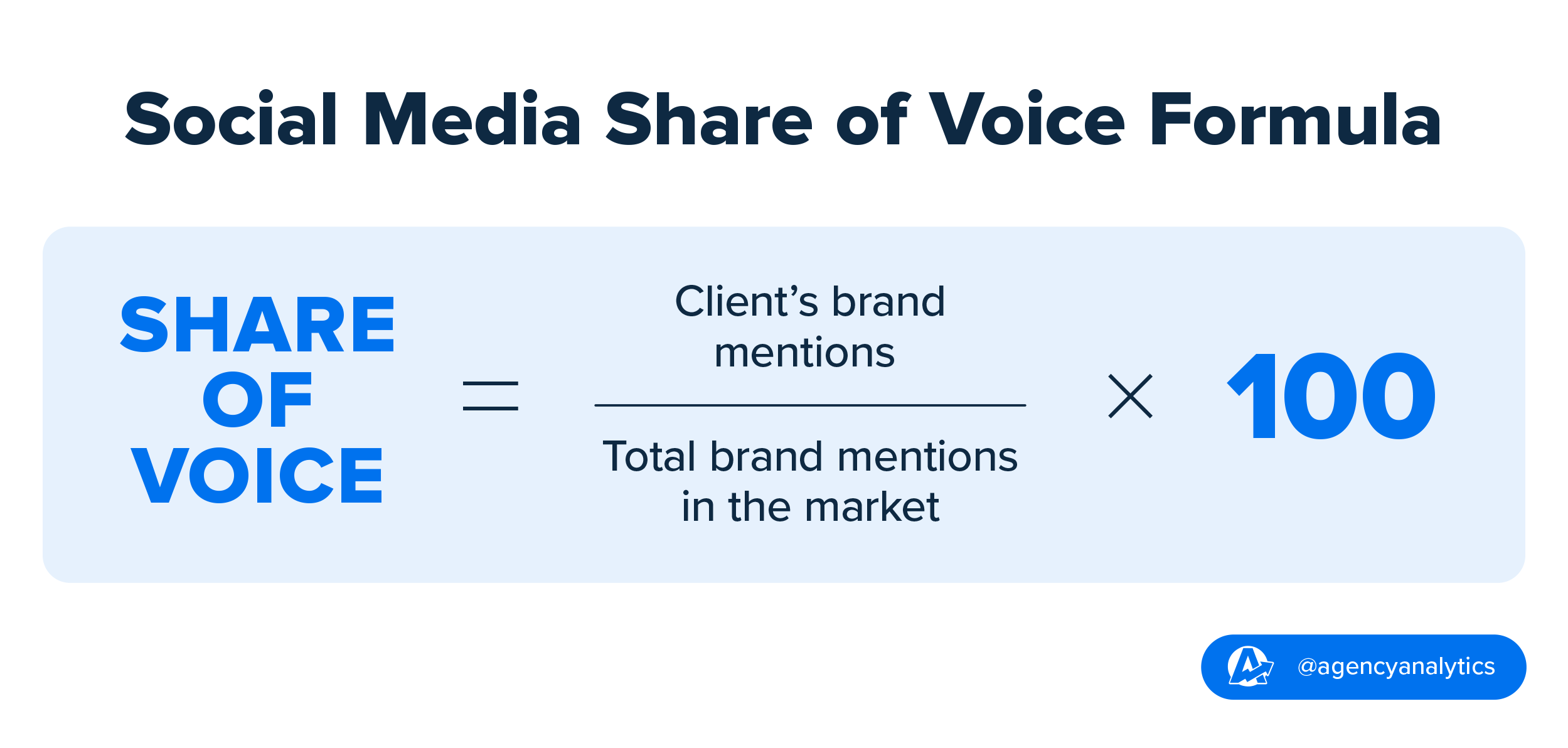
For example, if your agency is specifically measuring the Share of Voice on major social media networks, you would make a calculation based on the number of brand mentions or engagement rates your client has compared to their competitors.
The social media Share of Voice calculation would look like this:
Share of Voice = Client’s brand mentions / Total brand mentions in the market x 100
Analyzing Share of Voice helps your agency fine-tune clients' marketing strategy and campaigns and optimize content placement. Measuring social data like online mentions via social listening tools will establish a baseline and create a clear path forward to enhance brand awareness and competitive positioning.
How To Measure and Report Share of Voice to Clients
Accessing and calculating Share of Voice data is one thing, but how do you relay all of this important information to your clients in a way that they’ll easily understand? You don’t want to confuse clients by presenting a bunch of numbers and percentages, but instead, offer actionable advice that guides your clients to make better business decisions and see the value in forming a long-term relationship with your agency.
Follow these 10 steps to measure Share of Voice for your clients:
Step 1: Get Clear on Your Clients’ Metrics and Goals
Clearly define what matters most to your clients. What do they want you to measure and why? Are you tracking social media brand mentions, online reviews, organic search visibility, paid ad impressions data, or a combination?
Align the metrics with your clients' goals, such as increasing brand awareness or monitoring competition, and then stick to those same goals for a specific period of time.
Look to drive growth and use the same metrics every time you measure, or you will not have any coherence to your data.
Vi Wickam, President of Wizard of Ads Online
Step 2: Choose a Tool To Streamline Processes
You want your team to spend the majority of their time on billable tasks. Using a tool to monitor and analyze your clients’ Share of Voice is one way to help you achieve that.
Choose the appropriate tools based on the platforms your clients are active on. You may need to utilize a mix of social media analytics, SEO tools, advertising platforms, and social listening tools to cover all necessary aspects.
If you want to keep things simple while reducing platform costs, use an automated reporting platform like AgencyAnalytics to pull data into one convenient place. You’ll see all of your clients' important Share of Voice metrics across various platforms, connecting the dots of your marketing efforts.
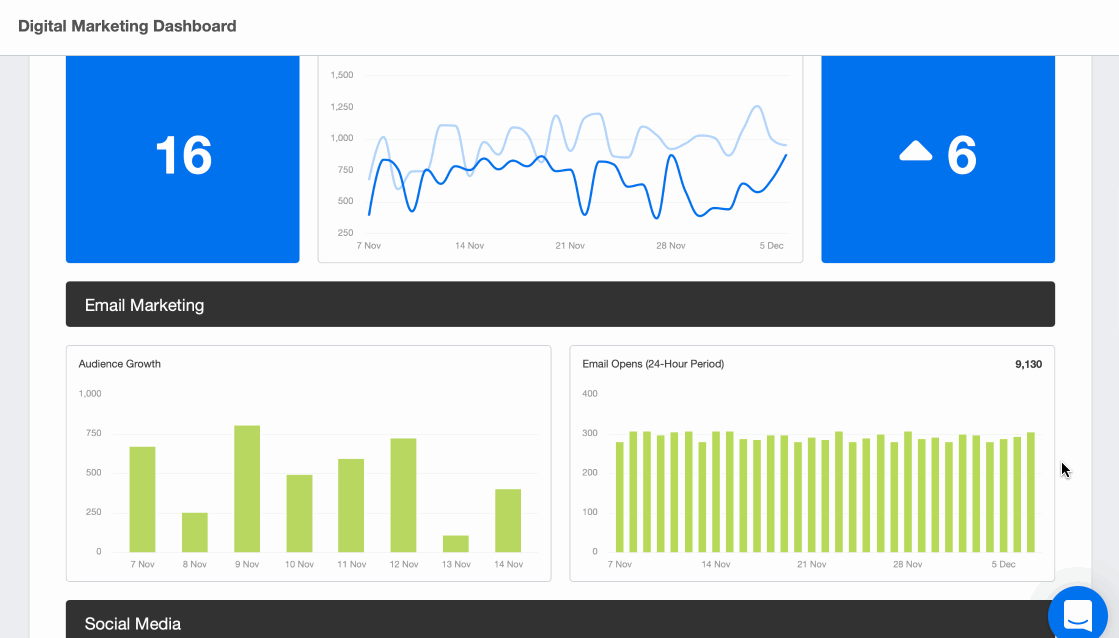
Start your free 14-day trial to monitor your clients’ Share of Voice data in one platform. With 80 marketing platforms to connect, join 7,000 customers who trust AgencyAnalytics for their client reporting.
Step 3: Identify Your Clients’ Competitors
Determine the key competitors your clients want to track. This can be based on industry knowledge, client input, or competitive analysis. The goal will be to gain an understanding of how the competitor’s brand is perceived, and what share of the online discussion they currently hold.
Step 4: Collect the Data
Gather data over a specific time period. This could be weekly, monthly, or any interval that suits your analysis. Did your client launch a product or service? Are they working in a seasonal industry? These are all time frames to consider when comparing their data to understand where their brand stands against competitors.
Agency Tip: Be sure to remain consistent with the time frame you choose across all your client’s marketing platforms and the tools you’re using to monitor their Share of Voice.
Step 5: Calculate Share of Voice
Depending on the platforms you're monitoring for your clients, you want to calculate their SOV accordingly with the relevant voice measurement formula.
For example, if you’re monitoring SEO Share of Voice specifically, you would use the following formula:
SOV = (Client’s Organic Visibility / Entire Market Organic Visibility) x 100
If your client’s organic visibility is 5,000 and all of the competitor’s visibility combined is 10,000, then the voice formula would be:
(5,000 / 15,000) * 100 = 33.3% share of voice
Always aim to calculate the percentage of their brand's organic visibility against competitors. However, keep in mind that measuring organic visibility includes different competitive metrics like keyword rankings, various marketing channels, and traffic distributions.
Step 6: Visualize and Interpret Data
Create visualizations such as graphs or charts to present the data clearly. Interpret the results–a higher SOV indicates more prominence, but remember that context matters because not all news is good news.
You don’t want to deliver a misleading report that appears as if they have a high number of brand mentions only to have your clients discover the sentiment is actually negative. Be sure to analyze trends and fluctuations over time and report the results transparently.
Step 7: Compare Against Goals
Compare the calculated SOV with your clients' goals. Are they achieving the desired visibility? Are they outperforming their competitors? Provide insights on what the data means for their marketing strategies.
For example, easily create a custom goal that shows organic traffic compared to the daily or monthly target to show how Share of Voice, and its impact on website visitors, is improving.
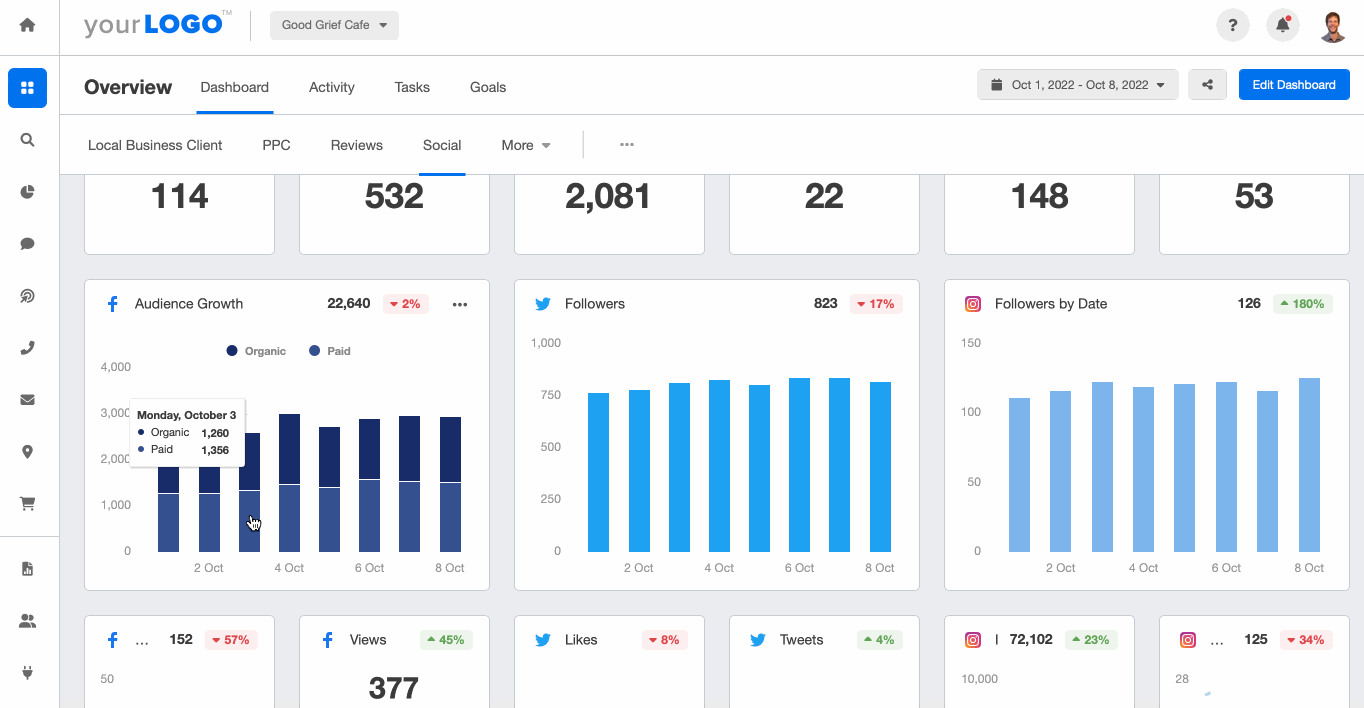
Step 8: Make Expert Recommendations in Your Reports
Break down the data into a clear and easily understandable explanation. Using data visualization helps to tell the story. With AgencyAnalytics, your agency creates reports with custom metrics and incorporates annotations to provide unique insights for each campaign.

This is the perfect opportunity for your agency to make recommendations based on your findings. For example, improving their content marketing strategies, refining any SEO best practices, or adjusting their ad spend.
Step 9: Adapt, Refine, and Take Action
Continuously refine your SOV measurement strategy based on client feedback and evolving market dynamics. Stay up-to-date with new tools and methodologies to ensure accurate and comprehensive measurement.
Step 10: Communicate, Communicate, Communicate
As your strategy evolves and your client’s SOV improves, share the wins and address the challenges. It’s critical to explain the SOV measurement process to your clients to set client expectations up front. Your SOV reports help clients understand their data and how it directly impacts their marketing strategies and businesses bottom line.
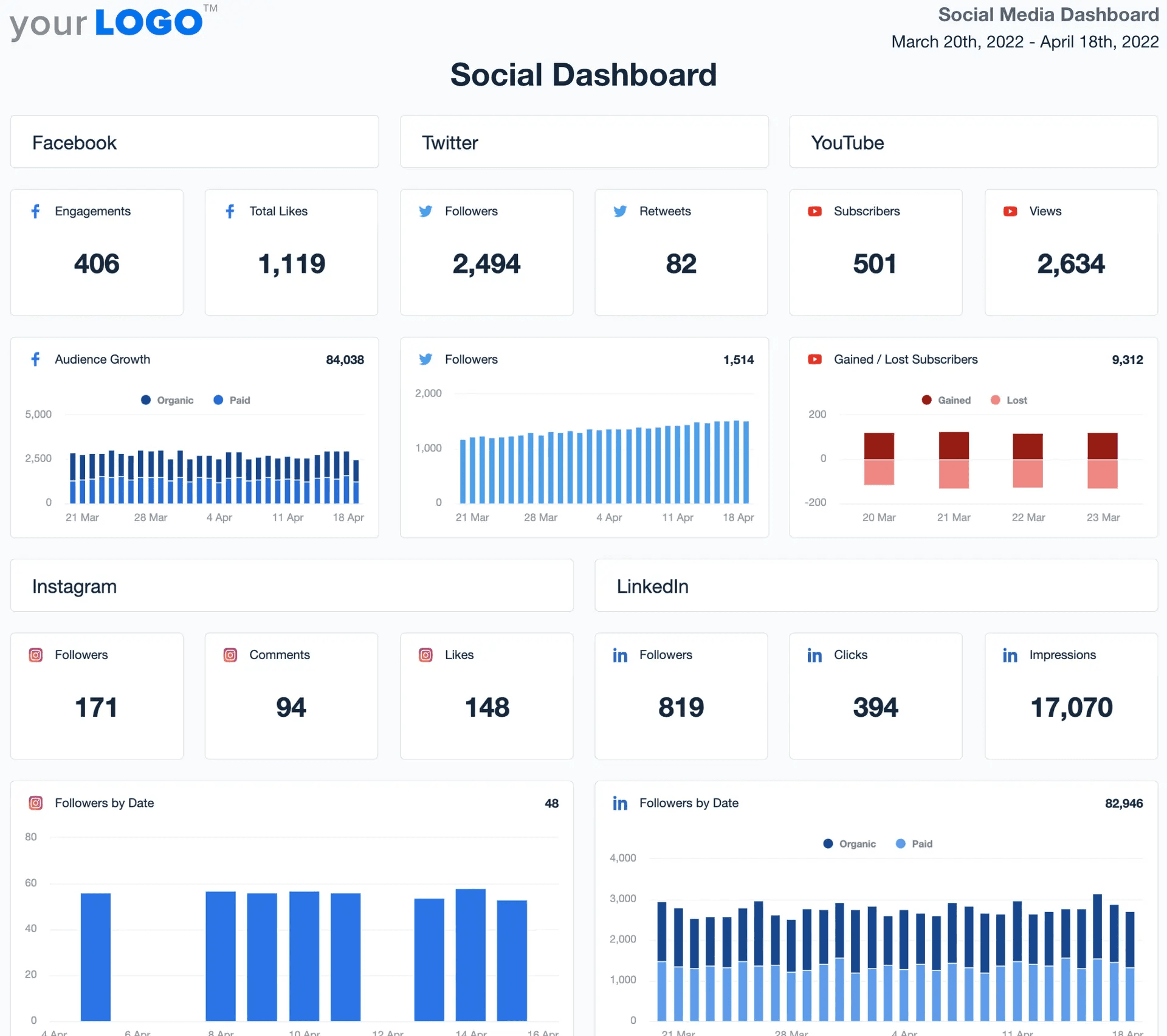
Reporting shows our clients the results we achieve for them in an easy-to-understand visual. We provide monthly reminders of how we are helping their business grow with these reports.
Denise Bowen, Managing Director at Web ROI
Using Voice Tools for Accurate SOV Calculations
Tools like Mention, Clerk.io, and Sprout Social are popular for calculating SOV to understand the conversations happening around a client’s brand, including news websites.
These tools help your agency make informed, data-driven decisions to optimize your clients’ campaigns. Rather than painstakingly tracking all brand mentions manually, voice tools streamline the process and provide accurate results you can rely on.
For a client’s owned channels, instead of pulling data across different marketing channels, an all-in-one platform like AgencyAnalytics gives you a bird's eye view of your clients’ marketing campaigns.
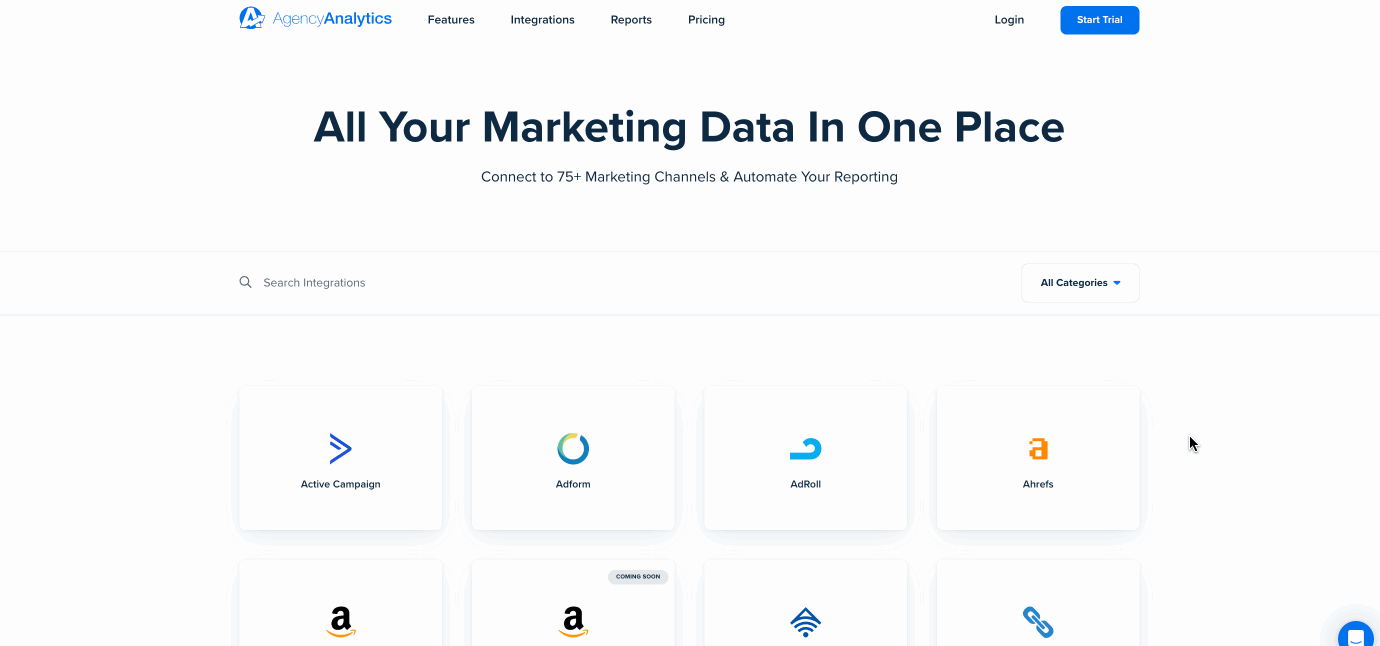
Measure your clients’ Share of Voice across 80+ marketing platforms with AgencyAnalytics. Get started with your free 14-day trial.
Common Mistakes When Measuring Share of Voice
Even if your agency uses a tool to measure Share of Voice, there are still some common mistakes you’ll want to avoid so you can spend more time on billable tasks instead of digging through data errors.
Here are some of the common pitfalls agencies make when measuring Share of Voice and how to sidestep them:
Incomplete Competitive Analysis
You may think you already know your clients’ top competitors. Heck, your clients may also think they know and even provide you with a list. However, focusing solely on the most obvious competitors results in inaccurate representation.
Avoid overlooking new and emerging businesses or niche competitors–they have the potential to affect your SOV measurements significantly.
What to Do:
Cast a wider net during competitor selection. Use a competitor analysis tool to identify both direct and indirect competitors across platforms, ensuring a comprehensive analysis that truly reflects your client’s industry.
If–like in the example we started with–a potential customer is looking for a nearby coffee shop but gets inundated with social posts and comments raving about a local Bistro Pub, that user could end up changing their plans.
Ignoring Major Social Media Networks or Marketing Channels
Another common mistake is disregarding specific platforms or marketing channels. In today's multifaceted digital ecosystem, There are so many platforms out there and they cater to distinct audiences. Just because your client isn’t currently posting dance videos on TikTok doesn’t mean that the entire channel should be forgotten about. Ignoring certain platforms gives you an incomplete understanding of your client's visibility.
What to do:
Your Share of Voice measurement approach should include a range of relevant marketing channels. Think of obscure local or industry networks, online groups, news articles, or forums. This ensures a more holistic view of your client's online presence.
Misinterpretation of Data
Misinterpreting Share of Voice data is a frustrating mistake that only leads to misguided marketing strategies. Keep in mind that a higher SOV doesn’t necessarily equal success, especially if it's driven by low-quality content or negative sentiment. On the other hand, a lower SOV might be acceptable if it's the result of a strategic focus on specific high-value platforms.
What to do:
Dive deeper into the data. Focus on sentiment analysis, engagement metrics, and qualitative insights to gain a nuanced understanding of your client's Share of Voice.
Manual Data Entry Errors
Entering data manually leaves you susceptible to human error, resulting in a substantial impact on any digital marketing strategies. Transposing numbers, omitting entries, or miscalculations distort your results and compromise the credibility of your analysis.
What to Do:
Embrace automation processes at your agency wherever possible to avoid mistakes and increase efficiency. Use Share of Voice measurement tools to automate data collection, analysis, and visualization. This not only reduces the likelihood of errors but also enhances efficiency and ensures consistency in your client reporting.
How To Improve Share of Voice
To keep your clients ahead of their competitors, you’ll need to look at ways to improve their Share of Voice. If you don’t know where to begin, here are some areas:
Improving Content Strategy and Social Media Mentions
When creating content, keep the target audience front of mind. Are you using industry jargon or language that they might not be searching for? Aim to create a variety of share-worthy content for each social media platform your client is using and tailor it to that platform specifically to garner more social mentions.
For example, blog post content is key for diving deeper into a particular topic of interest. This content can then be repurposed into an Instagram reel, TikTok, or LinkedIn post to reach a wider audience.
Experiment with videos, infographics, and other forms of content to address pain points and interests. And remember that consistency is key. Your marketing team should be posting regularly and creating a steady stream of quality content to keep your client’s brand top of mind.
Agency Tip: Use a social listening tool to understand and track online conversations about your clients’ brands. These tools alert you to social media mentions, reviews, and other pertinent discussion points where a client brand is presented.
Enhancing SEO Efforts
Optimizing your client's website for search engines is essential for boosting their organic visibility on search engine results pages. Research and target high-potential keywords that align with their industry and audience.
When creating valuable content for your clients, you want it to be keyword-rich content that answers a searcher’s question. Be sure to conduct comprehensive competitor research and look into keyword and campaign settings to increase a client’s website traffic.
Our agency does a Branded Search vs. Unbranded Search in Google for their category keywords in the market area. We also look at search volume for competitor's branded search when it's available.
Vi Wickam, President of Wizard of Ads Online
Maintain on-page SEO, off-page SEO, and technical SEO strategies to ensure overall website health. Small tweaks influence brand awareness, contributing to a higher Share of Voice in their monthly search volume metrics.
Agency Tip: Get creative helping your clients dominate the conversation online with PR efforts. Reach out to news outlets to see if they would be interested in featuring your clients’ products or services. At the very least, getting a backlink from news sites builds credibility and boosts organic traffic.
Utilizing Paid Advertising Effectively
Measure PPC share with a Share of Voice tool to see how ads are positioned within the market compared to competitors. Information such as paid advertising clicks identify areas of strengths and any opportunities for improvement.
Start by looking into your client’s Google Ads account. When creating a Google Ads campaign, target with clear messaging that resonates with their audience.
Use a variety of platforms for paid advertising beyond Google Ads, including social platforms like Facebook and Instagram. This will increase the chances of reaching the intended audience, and you’ll be able to measure share of paid media presence.

Bring all of your client’s paid ad metrics together into a comprehensive PPC reporting dashboard. Try AgencyAnalytics free for 14 days.
Engaging More on Social Media Platforms
Engaging with your client’s audience on major social networks is another great way to improve Share of Voice. Customers enjoy interacting with businesses they want to support. Tell your clients to be more active on their social media accounts or upsell your agency’s services to handle this for them. Either way, building a community online around your client’s own brand helps foster positive customer sentiment and drive brand loyalty.
With over 1 billion daily active users, Facebook is by far one of the most active and engaged communities on the planet. It is key in shaping a brand’s reputation among potential customers, increasing and maintaining engagement, and demonstrating social clout.
Sam Yielder, Paid Media Executive at Squidgy
Expanding Reach With Collaborations and Partnerships
Team up with industry influencers, thought leaders, or complementary brands to increase Share of Voice. Expand your client's reach by introducing your client’s business to new audiences.
Some great collaboration ideas include:
Teaming up for a giveaway on Instagram
Co-hosting or being a guest for a podcast or webinar
Guest posing on reputable blogs to earn a backlink to your client’s website
Participate in joint marketing campaigns
Strategic partnerships and collaborations don’t have to end online, either. Attending in-person conferences or sponsoring an event is a great way to get your client’s name out there.
The best way to build trust and brand awareness was to reach out to other vendors currently serving the industry that complimented or benefited from our work. We asked if we could partner with or sponsor their events, webinars, etc. By having our names and logos and even our teams seen together, we could piggyback on the trust they’ve already built: if you can trust that company, you can trust us too.
Lane Rizzardini, Co-owner of Sleep Apnea Leads
Using Customer Feedback for Product or Service Improvements
Customer feedback can be used to make improvements to product offerings.
For example, if customers are complaining about a facet of a particular product or service, your agency can craft a campaign around it to show their feedback matters. KFC Canada recently used this exact strategy by running a campaign to address their bland french fries:
How To Use Share of Voice to Pitch New Clients
Measuring and improving Share of Voice is a great way to retain clients by showcasing your agency’s value. But what about using Share of Voice to pitch new clients?
Get your foot in the door and land new clients by providing an explanation of their current Share of Voice as demonstrated by the numbers.
Pitch the strategies your agency would implement to increase the potential client’s Share of Voice. Clearly demonstrate the value to be gained via your agency’s services.
Wherever possible, back up your capabilities with case studies and testimonials. How have you helped previous clients increase Share of Voice, and how has this benefitted their bottom line? If you’re new to Share of Voice, consider sharing examples of how SOV has assisted other big, notable brands increase market share.
Armed with insights and an achievable solution in your pitch deck, your agency crafts a compelling case as to why this potential client should work with you to improve their Share of Voice and stay ahead of their competitors.
The Takeaway
Using Share of Voice is another helpful tool to have in your pocket to retain and win new clients. Understanding SOV helps pinpoint growth opportunities, fine-tune strategies, and deliver results that matter.
At the end of the day, Share of Voice isn't just a metric; it's a testament to an agency's determination to achieve real-world results for clients that directly impact their bottom line.
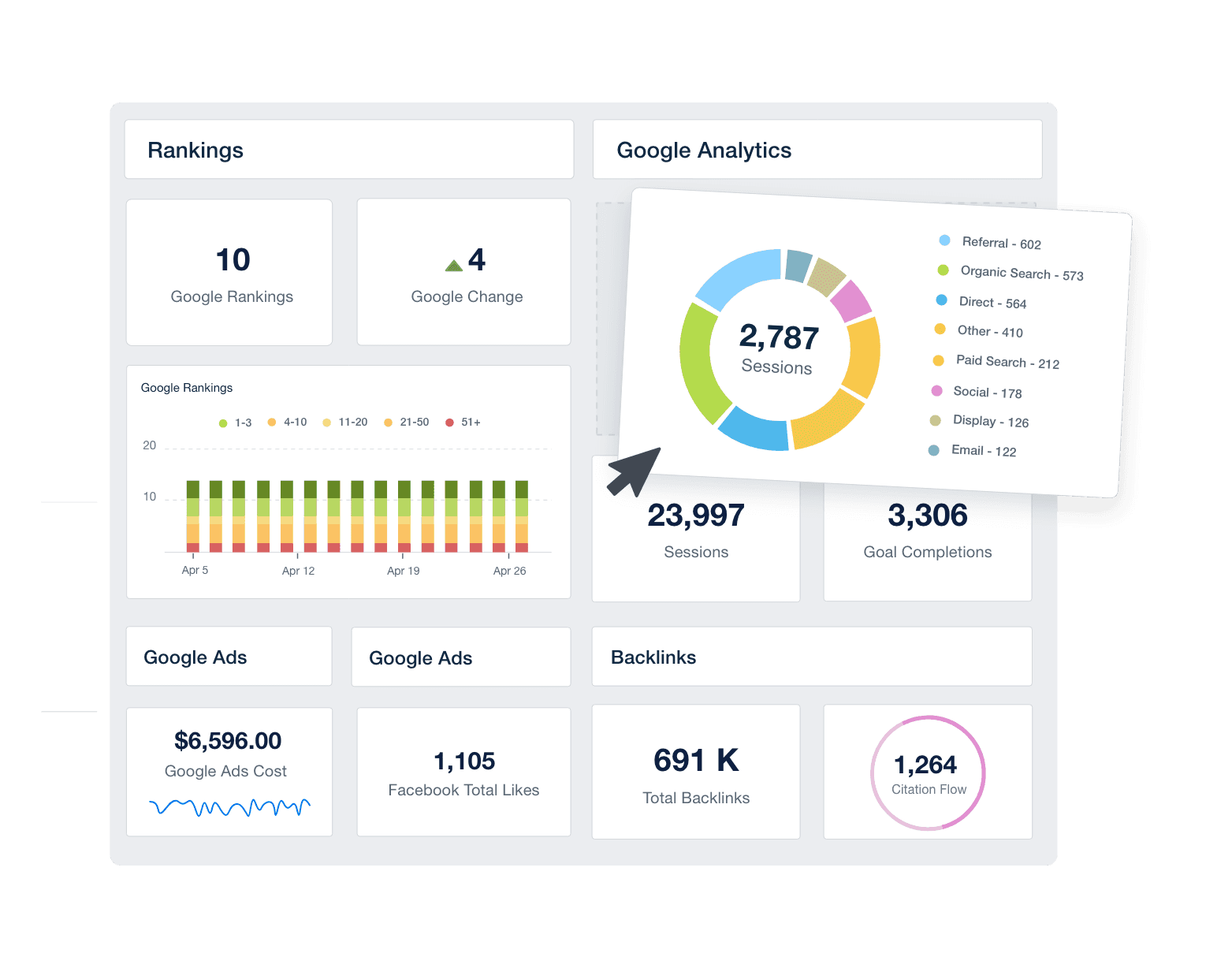
Connect to over 80 platforms and monitor your client’s SOV data in a single, easy-to-understand marking dashboard. Start your free 14-day trial today.

Written by
Richelle Peace is a writer with a degree in Journalism who focuses on web content, blog posts, and social media. She enjoys learning about different topics and sharing that knowledge with others. When she isn’t writing, Richelle spends time teaching yoga, where she combines mindfulness, movement, and her passion for wellness.
Read more posts by Richelle PeaceSee how 7,100+ marketing agencies help clients win
Free 14-day trial. No credit card required.





